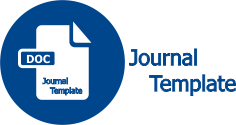Pengembangan Perangkat Pembelajaran Ikatan Kimia dengan Model Kooperatif Tipe Jigsaw untuk Meningkatkan Hasil Belajar Peserta Didik SMA
(1) Universitas Negeri Makassar
(2) Universitas Negeri Makassar
(3) Universitas Negeri Makassar
(*) Corresponding Author
DOI: https://doi.org/10.26858/cer.v4i2.20149
Abstract
Keywords
Full Text:
PDFReferences
Azzahro, I. F. 2014. Pengembangan Perangkat Pembelajaran Berbasis Discovery Learning pada Sub Materi Respirasi dan Fotosintesis Kelas VII SMP. Pensa E-Jurnal: Pendidikan Sains, 2(3), 1-9.
Hanafiah, Nanang, & Suhana, C. 2012. Konsep Strategi Pembelajaran. Bandung: Refika Aditama.
Hutami, D. P., & Wiyatmo, Y. 2018. Pengembangan Perangkat Pembelajaran Berbasis Guided Discovery Learning untuk Meningkatkan Pemahaman Konsep dan Kemampuan Kerjasama Peserta Didik. Jurnal Pendidikan Fisika, 7(1), 18-28.
Khomsiatun, S., & Retnawati, H. 2015. Pengembangan Perangkat Pembelajaran dengan Penemuan Terbimbing (Discovery Learning) untuk Meningkatkan Kemampuan Pemecahan Masalah. Jurnal Riset Pendidikan Matematika, 2(1), 92-106.
Luthfi, A. I., Danial, M., & Wijaya, M. 2016. Perbandingan Metode Pemberian Tugas Kerja Kelompok dan Kerja Individu pada Model Pembelajaran Discovery Learning terhadap Hasil Belajar Peserta Didik Kelas XI MIA SMAN 1 Tondong Tallasa Kab. Pangkep (Studi pada Materi Pokok Termokimia). Jurnal Chemica, 17(1), 58-66.
Nurhasanah, D. E., Kania, N., & Sunendar, A. 2018. Penggunaan Model Pembelajaran Discovery Learning untuk Meningkatkan Kemampuan Pemecahan Masalah pada Siswa SMP. Jurnal Didactical Mathematics, 1(1), 21-32.
Rahmawati, Y., Mardiyana, & Subanti, S. 2014. Pengembangan Perangkat Pembelajaran Berbasis Penemuan Terbimbing (Guided Discovery) dengan Pendekatan Somatic, Auditory, Visual, Intellectual (SAVI) pada Materi Pokok Peluang Kelas IX SMP Tahun Ajaran 2013/2014. Jurnal Elektronik Pembelajaran Matematika, 2(4), 379-388.
Thiagarajan, S., Semmel, D. S., & Semmel, M. I. 1974. Instructional Development for Training Teachers of Exceptional Children. Minneapolis, Minnesota: Leadership Training Institute/ Special Education, University of Minnesota.
Article Metrics
Abstract view : 240 times | PDF view : 65 timesRefbacks
- There are currently no refbacks.
Jurnal dipublikasikan oleh: Program Studi Pendidikan Kimia
Program Pascasarjana Universitas Negeri Makassar
Alamat JL. Bonto Langkasa Gunung Sari Makassar, 90222
Kampus PPs UNM Makassar Gedung AD ruang 406 Lt 4, Indonesia.Phone 082393643737/085145825311/085242228678
CER UNM Indexed by:

Chemistry Education Review (CER) is licensed under a Creative Commons Attribution-NonCommercial 4.0 International License.










